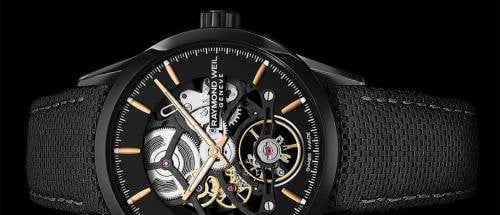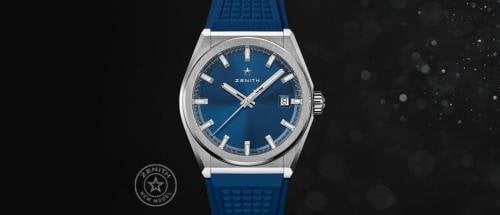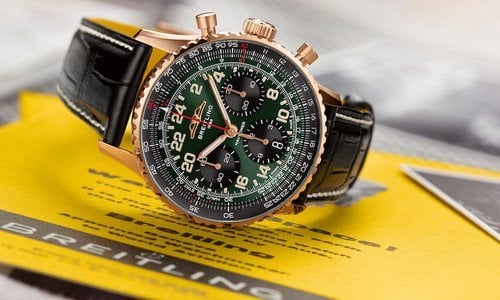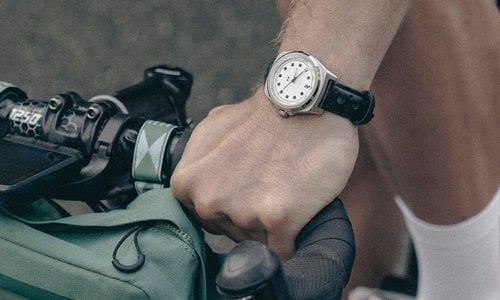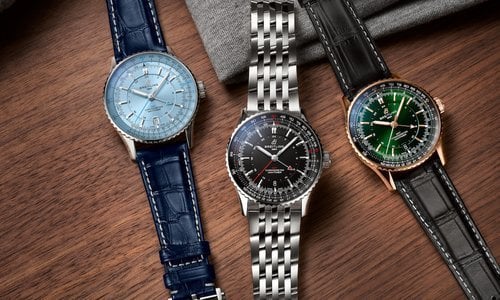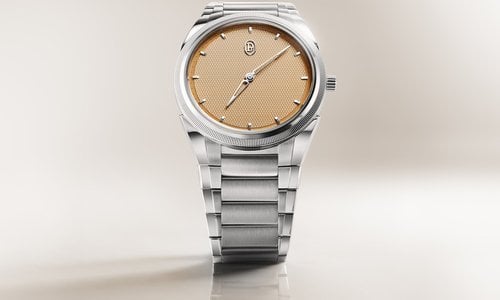Switzerland’s mechanical watch boom has brought a surge in watches bearing a special designation on the dial: chronometer. What are chronometers? How are they different from regular watches? Why are they important? Why are they mostly mechanical watches? And what should you tell customers about them? For the answers to these and other questions, read on.
1. What is a chronometer?
A chronometer is an extremely accurate watch or clock. It takes its name from the Greek words (chronos + metron) meaning to measure time. A Swiss chronometer is a watch, usually mechanical, whose precision has been tested and verified by an official Swiss watch testing bureau. The watch comes with a ratings certificate issued by the institute. The chronometer designation is a badge of honor, proof that the watch is of superior quality.
2. What does a watch have to do to earn the title of chronometer?
The watch’s movement must pass a battery of severe tests conducted for 15 days and nights. The movement’s accuracy is checked in five different positions and at various temperatures which simulate conditions under which the watch will be worn.
3. Who conducts the tests?
The Swiss Official Chronometer Control (Controle Officiel Suisse des Chronometeres, or COSC, in French). COSC is an independent association governed by the Swiss Civil Code.
Watch companies desiring the chronometer designation on their best pieces send movements to COSC. (COSC tests uncased movements; the companies case the movements after the tests.) COSC issues a performance certificate for each timepiece which successfully passes the tests.
There are three COSC centers in Switzerland where watch companies send movements to be tested—in Geneva, Bienne and Le Locle.
Switzerland has been officially testing chronometers since 1878. COSC as it exists today was founded in 1973.
4. What tests are run on the watch?
COSC conducts elaborate precision tests on the movements using cameras and computers, which analyze the data. COSC performs seven different tests. Failure to meet the minimum standard in any one of the tests means that a movement is rejected. The tests are complicated. Here is an attempt at a simple summary:
Test 1 : Mean Daily Rate: After 10 days of tests, the mean daily rate of the movement must be within the range of -4 to +6 seconds per day. COSC determines the mean daily rate by subtracting the time indicated by the movement 24 hours earlier from the time indicated on the day of observation.
Test 2 : Mean Variation in Rates: COSC observes the movement’s rate in five different positions (two horizontal, three vertical) each day over 10 days for a total of 50 rates. The mean variation in rates can be no more than 2 seconds.
Test 3 : Greatest Variation in Rates: The greatest of the five variations in rates in the five positions can be no more than 5 seconds per day.
Test 4 : Horizontal and Vertical Difference: COSC subtracts the average of the rates in the vertical position (on the first and second days) from the average of the rates in the horizontal position (on the ninth and tenth days). The difference must be no more than -6 to +8 seconds.
Test 5 : Greatest Deviation in Rates: The difference between the greatest daily rate and the mean daily test rate can be no more than 10 seconds per day.
Test 6 : Rate Variation Due to Temperature: COSC tests the movement’s rate at 8 degrees Celsius (46 degrees Fahrenheit) and at 38 degrees C (100 degrees F). It subtracts the cold temperature rate from the hot temperature rate and divides by 30. The variation must be no more than 0.6 seconds per day.
Test 7 : Resumption of the rate: This is obtained by subtracting the average mean daily rate of the first two days of testing from the mean daily rate of the last test day. The resumption of rate can be no more than 5 seconds. Simple, isn’t it? If a movement meets the standards, COSC issues a certificate designating it as a “chronometer.”
5. How many movements does COSC test each year and how many certificates are issued?
In 1995, COSC tested 844,043 movements. That was down slightly (-4.5%) from 1994 when a record 883,714 movements were submitted for testing. The vast majority of the movements sent in for testing pass. In 1995, COSC issued 814,868 certificates, 96.5% of those submitted. That means chronometers represent about 2% of Switzerland’s total production of complete watches.
6. Why are most chronometers mechanical watches?
Just one-third of 1% of the movements submitted for testing in 1995 (3,026 total) were quartz movements. That’s because electronic quartz technology is by definition an ultra-precise form of timekeeping and there is less need to demonstrate a quartz watch’s accuracy. That’s not the case with mechanical watches. Even so, COSC has developed stringent regulations which quartz watches must pass before they can be called chronometers. Worth noting: by far the leader in Swiss quartz chronometers in 1995 with two-thirds of the total certificates issued was Krieger Watch Corp. of Miami Beach, Fla.
7. Do many companies apply for chronometer certificates for their watches?
More than 60 firms submitted movements to COSC in 1995.
8. How is the demand for chronometers?
Despite the drop in requests in 1995, there has been a surge of watch company applications for chronometers in this decade. COSC data shows that the number of movements submitted bottomed out in 1976 at 225,712. Requests did not pass the 300,000 unit mark again until 1984. It rose steadily throughout the late 1980s but has soared in the 1990s, reflecting the strength of Rolex, in particular, and the general revival of Swiss mechanical watches on world markets. In 1990, the number of movements submitted to COSC passed the 600,000 unit mark for the first time. By 1994, the number had reached 883,714, an increase of 43.5% over 1990.
9. Which firm is the leader in production of Swiss chronometers?
Rolex is the undisputed chronometer king. An amazing 83% of all chronometer certificates issued by COSC in 1995 went to Rolex—more than 675,000 of them. You get some sense of Rolex’s dominance when you realize that only five firms (one of them a group, really) produce more than 6,000 chronometers a year. The second largest producer of chronometers is TAG Heuer (51,638 certificates in 1995), followed by Omega (31,135 certificates), the Cartier Group (6,393) and Bulgari (6,056).
10. What is the difference between a chronometer and a chronograph?
The terms sound similar but they have nothing to do with each other. A chronometer, as we have seen, is a superior timekeeper. A chronograph is a watch with a stopwatch function.
11. So what is a marine chronometer?
A marine chronometer is an instrument used on a ship at sea to determine the longitude by measuring the time. It was developed in the 18th century.
Source: American Time


